Israeli occupation forces shelled the outskirts of the last refuge on the southern edge of the Gaza Strip Friday, where the displaced population, penned against the border fence in their hundreds of thousands, feared a new assault with nowhere left to flee.
More than half of Gaza's 2.3mn residents are now homeless and crammed into Rafah. Tens of thousands more have arrived in recent days, carrying belongings in their arms and pulling children on carts, since Israeli forces last week launched one of the biggest assaults of the war to capture adjacent Khan Younis, the main southern city.
If the Israeli tanks keep coming, "we will be left with two choices: stay and die or climb the walls into Egypt", said Emad, 55, a businessman and father of six, reached on a mobile phone chat app.
"Most of Gaza's population are in Rafah. If the tanks storm in, it will be a massacre like never before during this war." Israeli (War) Minister Yoav Gallant said on Thursday that troops would now turn to Rafah, which along with Deir al-Balah just north of Khan Younis is among the last areas not taken in an almost four-month-old assault.
As the only part of Gaza with access to the limited food and medical aid trickling across the border, Rafah and nearby parts of Khan Younis have become a warren of makeshift tents, clogged by winter mud. Wind and cold add to the misery, blowing tents down or flooding them and the ground in-between.
"What should we do? We live in multiple miseries, a war, starvation, and now the rain," said Um Badri, a mother of five from Gaza City, now in a tent in Khan Younis.
"We used to wait for winter, to enjoy watching the rain from the balcony of our house. Now, our house is gone, and the rainwater has flooded the tent we have ended up in." With phone service mostly absent across Gaza, residents climbed a sandy berm at the border fence and crouched beside the razor wire hoping for an Egyptian mobile signal. Mariam Odeh was trying to get a message to family still in Khan Younis, "to tell them we are still alive and not martyrs like the others".
The UN says rescuers can no longer reach the sick and wounded on the battlefield in Khan Younis, and the prospect of combat reaching Rafah is almost unthinkable.
"Rafah is a pressure cooker of despair, and we fear for what comes next," Jens Laerke of the UN Office for the Coordination of Humanitarian Affairs told a briefing in Geneva.
Since Israel assault on Oct 7, Gaza health authorities say at least 27,131 Palestinians have been confirmed killed, 112 of them in the past 24 hours, with thousands more bodies feared lost amid the ruins.
Imagery analysed by the UN Satellite Centre shows that 30% of Gaza's buildings have also been destroyed or damaged in the Israeli offensive.
Mediators are awaiting a response from Hamas to a proposal drafted last week with Israeli and US spy chiefs and passed on by Egypt and Qatar, for the war's first extended ceasefire.
The only truce so far lasted only a week in late November, when militants freed 110 women, children and foreign hostages.
The proposal on the table envisages a first phase lasting 40 days, during which Hamas would free remaining civilian hostages, followed by further phases to release soldiers and hand over the bodies of the dead, according to a Palestinian official.
But the sides remain far apart over what would follow. Israel says Hamas must be eradicated before it pulls its troops out of Gaza or frees detainees, but Hamas wants a commitment to end the war before agreeing to a truce.
Hamas chief Ismail Haniyeh and Islamic Jihad chief Ziad al-Nakhala said in a joint statement that "any negotiations should lead to a complete end to the aggression, the withdrawal of the occupation army outside the Gaza Strip, the lifting of the siege" as well as reconstruction, provision of Gaza's basic needs and a full exchange of captives.
On another front, the Israeli military said its "Arrow" defence system had intercepted a missile heading for Israel in the area of the Red Sea.
No group immediately claimed responsibility. But Iran-allied Houthi fighters in Yemen have repeated fired missiles and drones at Red Sea shipping and other targets in what they say are acts of solidarity with Gazans.
The region is also bracing for US strikes on pro-Iranian militias in Syria and Iraq, which Washington says it is preparing after three US soldiers were killed in a drone strike in Jordan.
They were the first US fatalities in the wave of violence across the region by pro-Iranian groups accompanying the Gaza war.
US officials say the response will involve strikes over multiple days. Tehran says it will respond if its territory or interests are hit.
Since December, several senior commanders of Iran's elite Revolutionary Guards advising the Syrian government have been killed in presumed Israeli air strikes on Syria. Iranian semi-official media reported on Friday that a Guards adviser had been killed in another Israeli strike on Damascus.
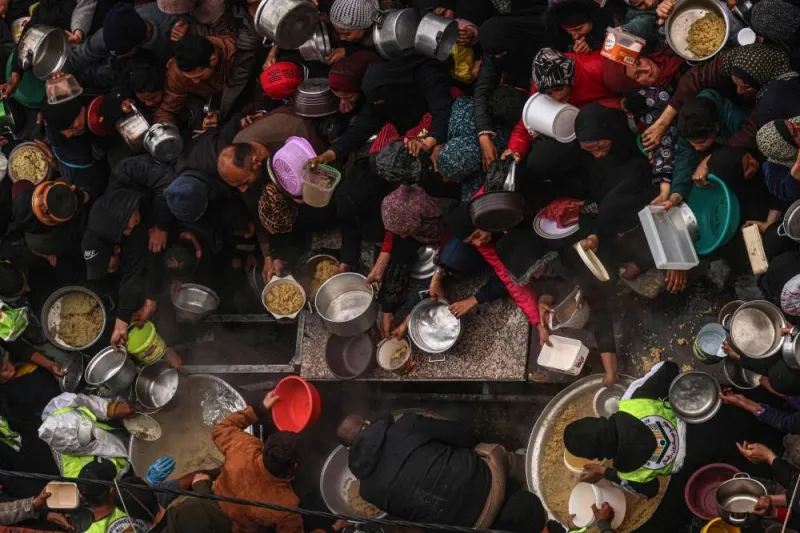
Palestinians receive food rations at a donation point at a camp for internally displaced people in Rafah in the southern Gaza Strip Friday. AFP
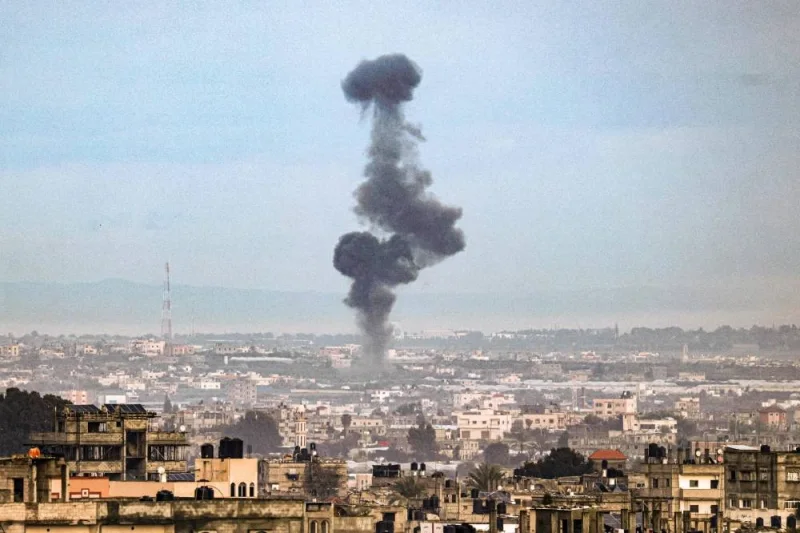
A picture taken from Rafah in the southern Gaza Strip shows smoke rising over buildings in Khan Yunis during Israeli bombardment Friday. AFP

A picture shows a makeshift tent camp for displaced Palestinians in rainy weather in Rafah in the southern Gaza Strip on Friday. AFP
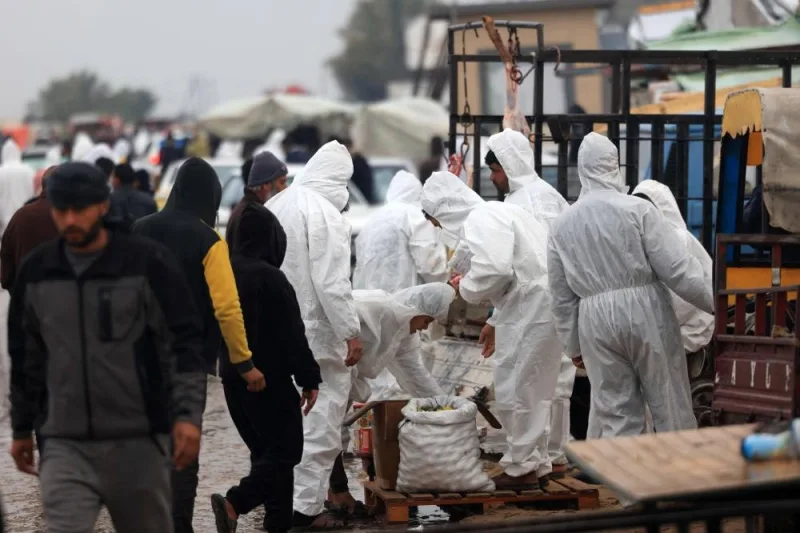
Palestinians, some wearing hazmat suits that were left over from the Coronavirus pandemic to keep warm, buy food at the western entrance of Khan Yunis in the southern Gaza Strip on Friday. AFP
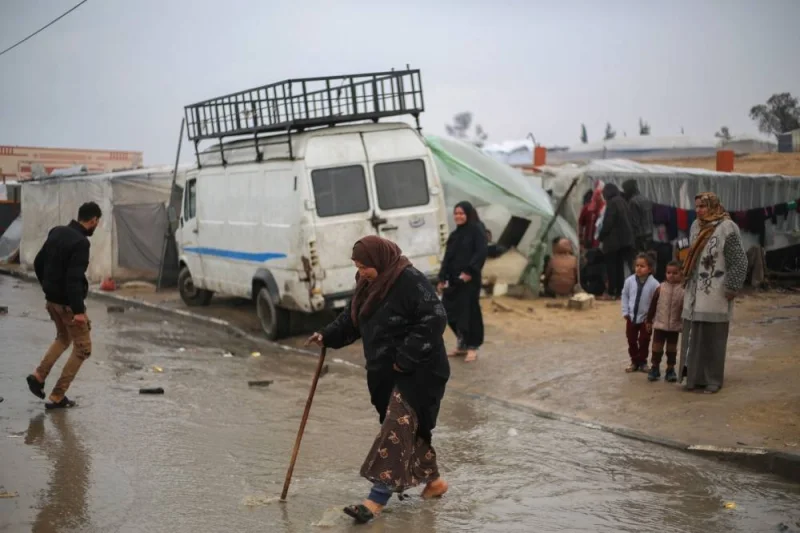
Displaced Palestinians wade in puddles amid rainy weather at a makeshift tent camp in Rafah in the southern Gaza Strip on Friday. AFP

A youth gathers wood in rainy weather at a makeshift tent camp in Rafah in the southern Gaza Strip on Friday. AFP
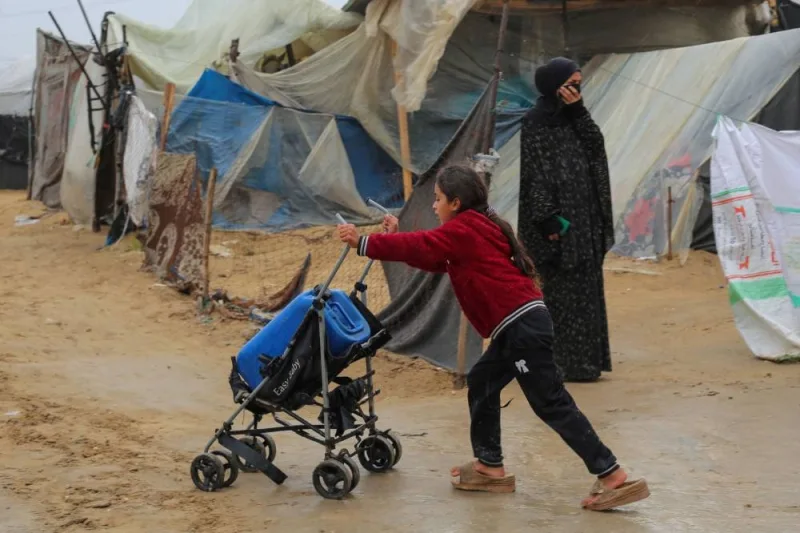
A girl uses a baby stroller to ferry drinking water in rainy weather at a makeshift tent camp in Rafah in the southern Gaza Strip on Friday. AFP


